Ecommerce Terms to Help Your Business Grow
Jan 29, 2021 | 13 minute read
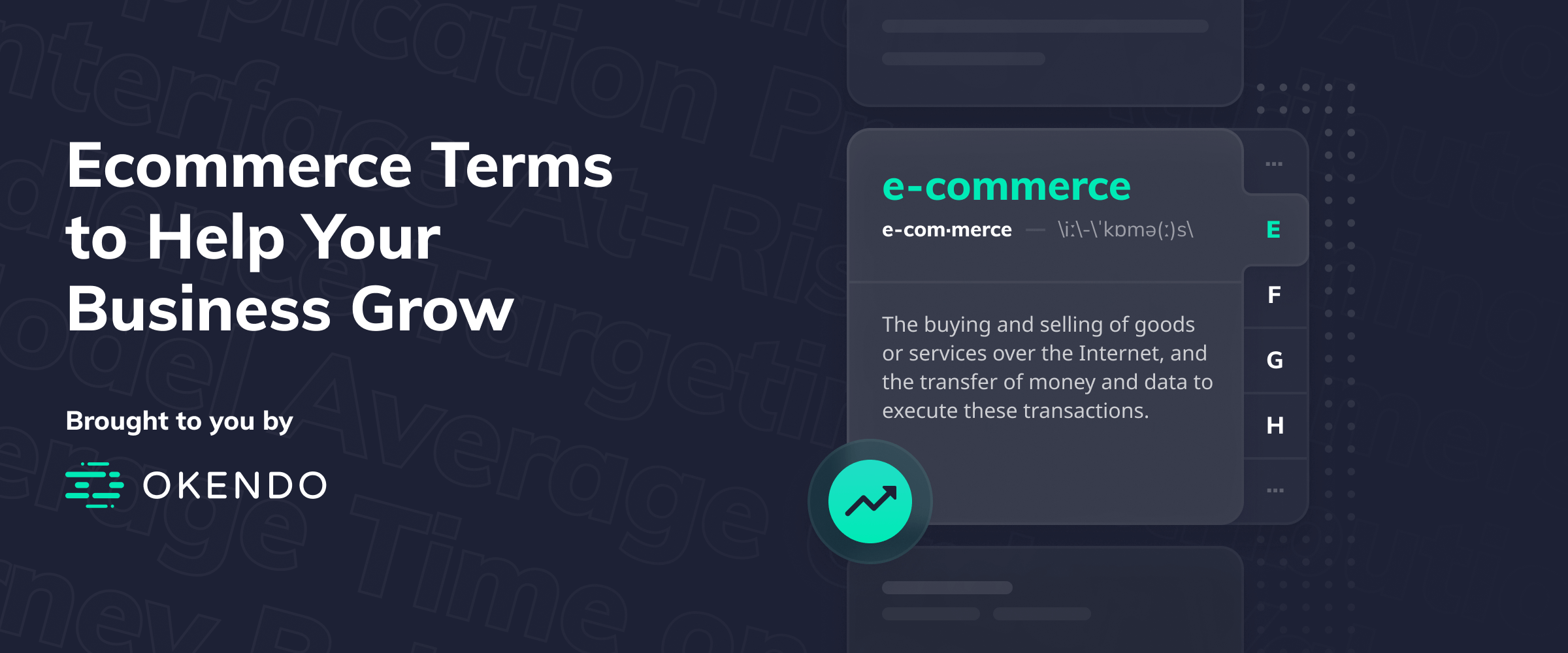
Lindsay Kolinsky
Director of Marketing
Officially defined as “commercial transactions conducted electronically on the internet”, ecommerce is constantly evolving, as retailers refine and perfect the customer experience to remove friction from the process.
From the rise of mobile commerce to omnichannel sales, voice-activated assistants and online marketplaces — the way we buy and sell goods and services online continues to shift to meet the changing expectations and behaviors of consumers.
In recent years, the eCommerce industry has seen an explosion in the popularity and success of DTC (Direct to Consumer) brands. These brands operate as true specialists, usually covering a small, product-specific niche (think razors, mattresses and coffee). By sharpening their offering and cutting out the middleman, they’re able to leverage advanced personalization, making shopping online increasingly bespoke.
As you’d expect from a rapidly evolving ecommerce space, it’s vital for DTC brands to keep up with the latest trends and advancements to continue innovating their approach. While major ecommerce platforms like Shopify provide resources such as their App Store (helpful for finding third party solutions to keep you at the forefront of developments) you can’t get started without a firm grasp of the terminology involved.
In this glossary, we’ve gathered the most essential ecommerce terms to help you evolve alongside the industry.
#
301 Redirect
A 301 Redirect is a status code, sent by the server to your browser. While we’re all accustomed to seeing status codes such as 404 (page not found) and 500 (forbidden), a 301 code will trigger an instant redirect so rapidly that it’s usually completely undetectable. It redirects the browser from the URL originally navigated to, to the URL where the piece of desired content is now located.
This is helpful for eCommerce retailers because as well as helping more of your customers find the content they were looking for, it gives a healthy boost to your SEO by helping search engines keep their index up to date.
3PL (Third Party Logistics)
A crucial element of supply chain management, 3PL (sometimes referred to as TPL) is a business’s use of third party suppliers to outsource essential parts of its operations. Typically this might involve distribution, warehousing and fulfillment services.
3PL enables ecommerce brands to join the dots between product and consumer and benefit from economies of scale to ensure that transactions are processed, packed and delivered safely. Added to this, from warehousing through to delivery, ecommerce brands benefit from the highly specialized nature and expertise of each partner, streamlining and refining their operations.
A
A/B Testing
Sometimes referred to as split testing, A/B testing is the process of displaying two different variants of the same web or other content to a segmented audience. The response to each variant is measured, so that the more appealing version can be determined, in an effort to maximize future conversions.
A/B testing can help eCommerce brands hone in on particular pain points that may be hampering their store, reduce bounce rates, increase the success of targeted email campaigns and much more. By deploying this strategy tactically stores, copy, marketing and advertising can all be fine-tuned and incrementally improved over time in a cost-effective manner.
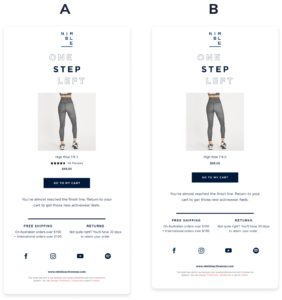
Above the Fold
This term refers to content that’s immediately visible to the consumer when they initially view a piece of media, before any kind of manipulation or interaction is required. Typically it means the area in which the most important, relevant or high-value information appears. The phrase derives from print media, where a newspaper’s name and leading headline and paragraphs would be visible before the paper was unfolded to be read more thoroughly.
Within a digital eCommerce context, above the fold refers to the content visible on a web page before the visitor has scrolled down through the page. With the proliferation of screen sizes in use, determining where the fold may appear for each customer is increasingly challenging. While users will anticipate the need to scroll through a web store page, the information presented above the fold needs to be appealing enough for them to want to do so.
Affiliate
In marketing, an affiliate represents an entity with a formal arrangement to receive commission (or some other form of remuneration) in exchange for driving sales or traffic through to another business. Affiliates may use multiple channels to generate sales, from advertisements through to “advertorial” content, social media posts and videos on platforms such as YouTube.
Affiliate marketing has long been a promotional model within the world of eCommerce, and is generally considered to be highly cost-effective. As a performance-based model, brands are only investing in affiliates who are able to deliver on specific desirable actions. Thanks to the specialist nature of online communities, affiliate marketing is able to reach highly-targeted audiences.
Attributes
Attributes within marketing refer to the range of varying factors that a customer will consider when making a purchase. Anything that can influence a purchase decision from the physical (size, color, material) through to the intangible (speed of delivery, perceived value) can be considered an attribute. Attributes help retailers to better understand the motivations of their customers.
Within eCommerce, attributes can be a helpful way to get your products noticed in a sea of competition. By ensuring product attributes show up in search engines, retailers can appeal to their customers’ specific motivations and desires.
Okendo harnesses the power of Attributes to help collect specific insights showing the appeal, performance and potential of specific products. Additionally, customer attributes (demographics, lifestyle etc) can be explored to give a significant boost to marketing segmentation.
API (Application Programming Interface)
An API refers to an application programming interface that enables two or more pieces of software to exchange information. APIs have an extraordinarily wide range of uses as they simplify complex processes, extend system functionality, control code and more.
In an eCommerce context APIs might share product information, catalog data, site search, sales tax and much more. By offering developer APIs, eCommerce software vendors are able to let stores connect easily with their technology, integrating its functionality into their online stores.
At-Risk Customers
A term commonly used in relation to subscription services, at-risk customers are those who are showing all the signs of not renewing with a business. Any customer who is unlikely to be retained and will contribute to churn rate, can be considered an at-risk customer.
When it comes to eCommerce audiences, retention is generally considered to be a more desirable strategy than customer acquisition. Online retailers who can accurately identify at-risk customers have a chance to put things right before the real damage is done. There are a number of ways to build customers’ loyalty with your brand including well-timed discounts, and enhanced customer service.
Audience Targeting
Audience targeting refers to the practices of specifically defining the demographics of the market that your product or service will aim to appeal to. Audience targeting will involve careful research, testing and development. Once a target audience has been identified, messaging and merchandising can be fine-tuned to maximize appeal to this specific segment.
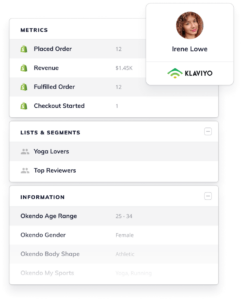
Audience targeting is an essential component of eCommerce marketing and can be achieved through a combination of research and data analysis. By carefully studying your current customers, your competitors’ audience, demographics and psychographics, online retailers can ensure the greatest ROI on their marketing investments.

Attribution Model
An attribution model is the way marketers can evaluate the touchpoints that a customer encountered along their path to purchase. It attempts to ascertain which messages and specific channels had the greatest impact on achieving conversion.
Accurate attribution modeling is an increasingly important factor in eCommerce brands’ efforts to optimize their marketing spend. As online brands devote increasing levels of resources to omnichannel strategies, it’s essential to have a reliable understanding of where the most impact is being made. A very granular level of data analysis is required to achieve the best results.
AOV (Average Order Value)
Average order value (or AOV) is an ecommerce metric that enables online retailers to get a clear understanding of the typical cart value of every conversion their store is making. To calculate AOV, simply divide total revenue across a time period of your choice by the number of orders placed within that specific window.
It’s vital to have a good idea of the typical order value your online store can expect to receive. This can help with pricing strategy, promotional threshold setting, sales messaging and much more. It’s also a great metric to track over time to ascertain if improvements are being made.
Average Time on Site
As you’d expect, average time on site refers to the typical length of time that a customer will spend browsing your online store. A higher average time on site suggests a lower bounce rate — your customers are better engaged and as a result, more likely to make a purchase.
For online retailers, average time on site can prove a great metric to track. The longer a customer can be encouraged to browse, the higher the chance of conversion. And to get even more granular, studying average time on page can prove illuminating. ECommerce brands should put effort into increasing the amount of time their customers spend browsing product pages as this signals a high intent to purchase.
B
BFCM (Black Friday Cyber Monday)
Back Friday Cyber Monday refers to a short, increasingly popular promotional sales window that starts on the Friday following the US’s Thanksgiving holiday. Traditionally, retailers heavily discount items across these days, giving consumers the opportunity to grab bargains in the lead up to Christmas and the holiday period. Sales during this period tend to skyrocket. Despite the large discounts granted, new sales records are achieved annually.
Black Friday started out as a brick and mortar store phenomenon. Cyber Monday developed in response to this, offering an online equivalent for those who had either missed out on bargains in-store or who preferred to shop online. Today, the opportunity for retailers has spread far beyond the USA, with countries and brands all around the world getting in on the promotional action. BFCM marketing strategies have become essential for ecommerce brands looking to stand out amongst the competition.
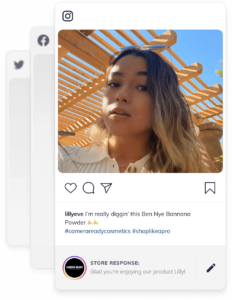
Buying Journey
Buying journey, also known as purchase journey, refers to the path a customer takes towards successful conversion. Within marketing theory, this journey is typically broken down into stages that denote the gradually changing state of the customer from awareness through to purchase decision.
Well-mapped buying journeys can prove immensely helpful to eCommerce marketers working to adjust and finetune their messaging and approach at every step. By adjusting the content, communication, offers and imagery that your customers are exposed to, conversion rates can be optimized.
Behavioral Marketing
Behavioral marketing refers to the practice of serving specifically targeted adverts and messaging to an audience segmented based on their past behavior and actions. Behavioral marketing is thought to be especially effective because, despite being automated, it’s based on clear trigger actions that should ensure a higher chance of positive reception and subsequent conversion.
Behavioral marketing is especially well suited to eCommerce and marketers have access to many rich sources of information about the way their audience interacts with their brand. From web analytics to heat maps and purchase history, the way that your audience acts can provide an incredibly powerful and practical form of smart segmentation.
Bounce Rate
Bounce rate refers to the number of site visitors who navigate away after viewing only one page. The aim is of course to get bounce rate reduced to as low a percentage as possible, keeping visitors active and exploring your site. Bounce rate can be a helpful metric to keep track of the performance of certain pages that you’re actively driving traffic towards. A high bounce rate indicates that the content, layout or functionality of the page isn’t appealing enough to inspire further engagement.
Bounce rates for ecommerce stores are typically lower than average. But while they’re a helpful metric to track, it should be remembered that they can potentially be slightly misleading. As an online retailer you might, for example, be driving traffic to a landing page that aims to convert in a single step without navigation to any other pages necessary.
Browse Abandonment
Similar and yet subtly different to your bounce rate, browse abandonment typically refers to a visitor landing on your store, exploring category or product pages, but then leaving without adding any items to cart. By detecting a visitor’s increasing chance of browse abandonment, tactics designed to amp up urgency can be deployed (for example pop-up messages offering discount codes or highlighting scarcity / popularity of the item in question).
It can help to think of this as the digital version of window shopping. When making online purchases, it’s quite common to explore a product and then leave to make a comparison or give the purchase some careful consideration. Because of this, nurturing retargeting campaigns can be incredibly effective. You know that the visitor had a fairly well-defined interest in the items they were exploring. By ensuring that these pieces are kept at the front of their mind, you leave the door open for a return visit and successful conversion.
Bundling
Bundling is one of the purest forms of upselling to improve conversion rates. Offering curated bundles of highly relevant and complementary products at an attractive price point, visitors can be encouraged to buy more. It’s a concept built upon the idea of a “consumer surplus” — the difference between what the consumer is willing to pay, and what they actually pay. The consumer perceives the opportunity to grab a bargain, and parts with more of their money.
In ecommerce, bundling can represent a very attractive proposition for both consumers and retailers. It’s a fantastic way to drive up AOV and by extension, boost total revenue. By leveraging modern technology, online stores have the ability to automatically generate bundles of “recommended” complementary products, displaying them within the purchase process and offering the temptation of an attractive lower combined price.
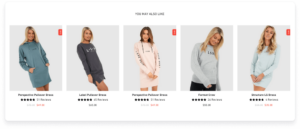
C
CCPA (California Consumer Privacy Act)
The CCPA is a State statute that allows any California consumer to request to see all information a company has stored on them. Additionally, they can demand to see a full list of all the third parties that this data has been shared with. The law went into effect on January 1st 2020, with enforcement beginning on July 1st 2020.
Is your ecommerce store affected? Businesses must meet a specific set of requirements in order to be subject to CCPA. These include having gross annual revenue of more than $25 million, buying, receiving or selling the personal data of 50,000 or more consumers, households or devices within California, or deriving 50% or more of their annual revenue from selling consumers’ personal information.
CTA (Call-To-Action)
A call-to-action is a request for a specific action to be taken. Typically short, punchy, clear and urgent, a call-to-action (or CTA) will spell out exactly what step the visitor should take next as part of their journey.
Buy now … Learn more … Grab a bargain today. Ecommerce messaging is dominated by calls-to-action which aim to inspire urgency in the reader, at the same time as clearly paving the way for their successful conversion. Of course, not all CTAs within an eCommerce context will be purchase-focused. You might want to inspire greater product discovery, encourage newsletter sign up, or highlight or request reviews.
Ready to learn more?